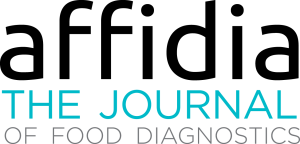Testing with purpose: never ask a question if you are not ready to face the answer
Analytical science, both in chemistry and microbiology, has seen a drastic technical evolution in recent years. It’s possible to test for analytes with very little knowledge about them. And this is where things start to get difficult. Just because one can test for something, should one test for it? And why? Which actions, if any, should be taken if a sample is found to be non-compliant?In its 2013 revision of the principles and guidelines for the establishment and application of microbiological criteria related to foods (CAC GL 21-1997), the Codex Alimentarius Committee on Food Hygiene established in point 4.11 the action to be taken when the microbiological criterion is not met: “In situations of non-conformance with the microbiological criterion (unsatisfactory results), actions to be applied should include corrective actions related to the purpose of the testing. These actions should be based on an assessment of the risk to the consumer where relevant….”Unfortunately, testing is sometimes conducted without a fully-documented risk assessment in place. Mitigation actions are often considered only after problems occur and without a predefined action plan already in place. What is currently valid for testing surfaces in the food industry for SARS-CoV-2 is unfortunately already true for traditional microbiological criteria such as pathogens of concern (Listeria monocytogenes, Salmonella spp., etc.) and hygiene indicators (Enterobacteriaceae, Total Mesophilic Count, etc.). Testing is done for historical or regulatory purposes but the rationale to test per se is lost or poorly documented. While good records are always welcome, non-compliant results are at best unexpected and at worst feared when there is no back-up plan in place.When facing a non-compliant result, e.g. detection of a pathogen, one should already know what needs to be done and why the test was initially conducted. Complying with regulations, or even with consumer expectations, is not enough to justify a testing regime. In the risk-assessment process that leads to therisk-management decision, i.e. testing, the possible corrective and preventive actions should already be established, as well. Preparedness is crucial when in crisis management mode.A Failure Mode Effect Analysis (FMEA: What if things go wrong?) should be done for each criterion that will be analysed. Thanks to the evolution of technology, many analyses that previously were too long, too complex, or even impossible can now be conducted routinely by most analytical food laboratories. But the capability to test does not necessarily mean that testing should be done. Stepping back and reflecting upon the need to test should come first. Don’t perform analyses because they are possible but because they are necessary to ensure the compliance of the sample to defined criterion (analyte, limits). How non-compliant result are obtained as well as the different possibilities for root cause analysis and corrective and preventive actions should all be documented. Four hundred years ago, in his 16th century novel, The Life of Gargantua and of Pantagruel, Rabelais stated that “science without conscience is the ruin of soul.” Testing for the sake of testing without a clearly-documented rationale does not help.
Disclaimer: This article represents the opinion of its author and does not necessarily represent the opinions of any organizations or institutions with whom the author is affiliated.
Disclaimer: This article represents the opinion of its author and does not necessarily represent the opinions of any organizations or institutions with whom the author is affiliated.
Download content now


















